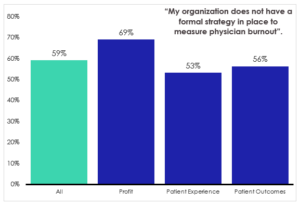The Doctor-Patient Relationship Must Be The Cornerstone Of Your Digital Transformation Strategy
Electronic health records (EHRs) have decimated physician productivity, while patient satisfaction remains stagnant. This has been the disappointing end to the nation’s first digital transformation effort, which started in 2009 as the American Recovery and Reinvestment Act funneled $35 billion into subsidized EHR implementations. That financial windfall drove EHR adoption from under 20 percent to over 95 percent in the nation’s hospitals and doctor’s offices over the course of the last decade. The investment was made based on the belief that moving from paper to computers would increase clinician productivity and reduce medical errors. That failed.
Healthcare’s New Digital Revolution
The US Department of Health and Human Services recently released two landmark interoperability rules, bringing sweeping changes to the data sharing landscape in healthcare. These rules will spur a second decade of intense digital transformation investments. In order to ensure the industry does not repeat past mistakes, it is critical that these investments be rooted firmly in a human-centered design principle that puts the doctor-patient relationship at the center of investment decisions.
Engineering The Doctor-Patient Relationship
Forrester has partnered with HIMSS (the Healthcare Information and Management Systems Society) to survey health system workers on their organizational culture, as well as the technologies being used to capture patient satisfaction and physician burnout data and the strategies being piloted to improve them. One hundred and seventy-four health system workers completed the survey. What we found was troubling, to say the least.

Culturally, most workers characterize their organizations as outcomes-focused, but the second-largest cohort reports that its organization prioritizes profit first and foremost. When asked about strategies and technologies for improving the experiences of patients and their doctors, profit-focused organizations consistently lagged behind others.

Of note, physician burnout continues to be the forgotten leg of the Quadruple Aim as a majority of respondents report that their organizations have no strategy for even measuring the problem.
The Next Phase Of Digital Doctor-Patient Relationship Research
Forrester and HIMSS have published an in-depth report on these findings, which is free to the public. A webinar to go over key findings from the study will be held on March 26 at 1 p.m. ET. Over the next year, our research will bring us deeper into the strategies uncovered in this initial research effort, as we work with health systems to validate the strategies surfaced in this inaugural research and lead the experience-centered digital transformation of healthcare.